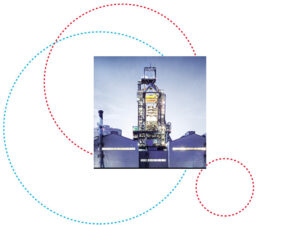Scientists and engineers from the University of Luxembourg have developed cutting-edge multi-physics simulation technology to analyse the complex process in a blast furnace. Their findings have been recently published.
Understanding multi-phase flow with its complex transfer mechanism of mass, momentum and heat between individual phases in a blast furnace is of critical importance for design, operation and meeting environmental challenges. A blast furnace is a key reactor in the steel making industry and consumes large amounts of energy and produces app 70 % of the CO2 emissions of a steel plant. Thus, small improvements can have a large impact on production costs and the carbon footprint.
reflecting theFigure 1: Cohesive zone in a blast furnace production rate of liquid metal, characteristic temperature and velocity distribution
In order to support improvements, a novel and innovative numerical approach based on the Extended Discrete Element Method (XDEM) is applied to resolve the physics and phase interactions in a blast furnace. “A thorough analysis of the detailed data obtained unveils the underlying physics of the complex process in a blast furnace. With these insights, the understanding of multi-physics in a blast has been considerably broadened and promotes a shift from current empirical-based practice to an advanced multi-physics simulation technology. It will support decision makers and help them taking informed decisions”, explains Prof. Bernhard Peters from the Department of Engineering at the University of Luxembourg.
Publication: https://orbilu.uni.lu/handle/10993/55412
